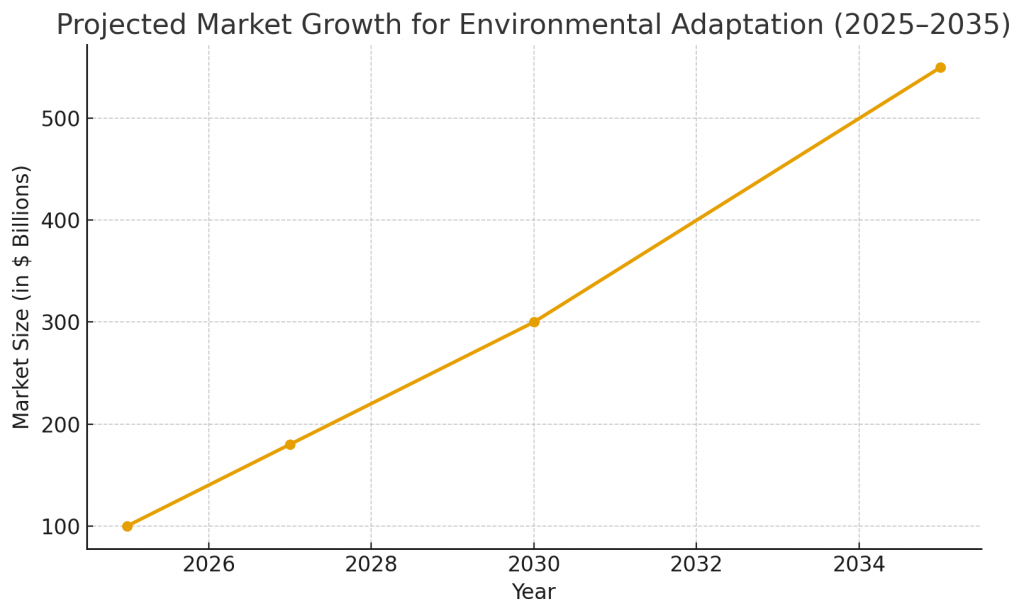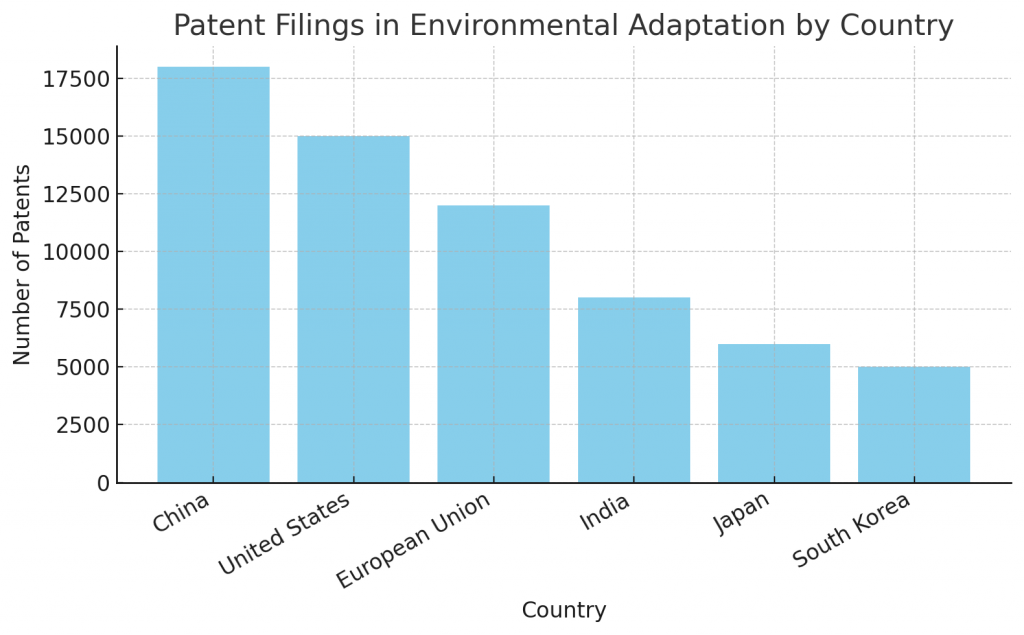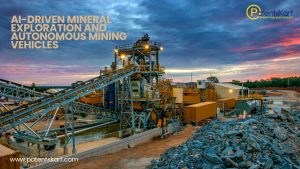What is environmental adaptation and why does it matter today?
As risks compound, environmental adaptation offers a way to turn uncertainty into actionable planning. Climate change is now a lived reality: rising seas, hotter summers, erratic rainfall, and stronger storms are testing how we grow food, build cities, and keep essential services running. Adaptation is no longer optional; it sits alongside mitigation as a core pillar of responsible planning.
Our focus in this guide is practical: how to plan, finance, and deliver resilience that protects people and prosperity without slowing innovation or growth. From farms and factories to coastal towns and megacities, the agenda touches every sector. That is the promise of environmental adaptation: a shift from reactive recovery to forward-looking design.
How does resilience actually improve outcomes?
Resilience can be broken into three levers: reduce exposure to hazards, reduce sensitivity of assets and services, and increase the capacity of people and institutions to cope and recover. Environmental adaptation helps operationalize all three—turning plans into repeatable playbooks.
Early-warning systems, stronger building codes, and agile governance all reinforce each other when they are planned as one portfolio rather than isolated projects. When budgets and roadmaps explicitly integrate environmental adaptation, organizations gain the time and information they need to act before disruptions escalate.
Why is agriculture at the front line of change?
Food systems face shifting seasons, new pest patterns, and heat stress. Farmers are responding with precision irrigation, climate-ready seeds, and better storage and logistics to reduce spoilage. Environmental adaptation in agriculture keeps yields stable and protects rural livelihoods.
Advisory services and parametric insurance smooth income shocks, while soil health programs improve yields and water retention over time. By mainstreaming environmental adaptation into extension services and crop insurance, nations keep markets supplied even when weather becomes erratic.
How do water and energy systems stay reliable under stress?
Water utilities are deploying smart meters and pressure management to cut leakage, while industries reuse water in closed loops to stabilize supply during droughts. Environmental adaptation planning across water and power prevents one system’s failure from cascading into another.
On the energy side, microgrids and storage keep hospitals, data centers, and schools powered when storms bring central lines down; demand response and efficiency cut peak loads. By designing for extremes—not historical averages—environmental adaptation turns essential services into lifelines rather than liabilities.
How can urban planning reduce risk without slowing growth?
Cities face multiple hazards at once: heat, flooding, air pollution, and aging infrastructure. Urban design can cool neighborhoods with shade trees, cool roofs, and reflective pavements. When heat action plans are tied to social services, environmental adaptation also protects the most vulnerable residents.
Drainage upgrades add permeable surfaces, detention parks, and restored river corridors; transit networks diversify routes and protect critical nodes from inundation. Digital twins and risk maps guide investments toward neighborhoods with the highest exposure while building public trust.
What role do ecosystems and nature-based solutions play?
Nature is a proven ally. Mangroves and salt marshes buffer storm surge; reefs dissipate wave energy; forests regulate water and provide cooler microclimates. Blending engineered defenses with restoration embeds environmental adaptation into living systems.
This green-gray mix delivers multiple benefits at lower cost, but it requires long-term stewardship, land rights clarity, and community participation. Transparent monitoring of co-benefits—carbon storage, tourism, fisheries—helps unlock financing and sustain local stewardship for their programs.
Which policies and standards make change faster?
Policies convert ambition into action. National adaptation plans align ministries; resilient procurement standards help public buyers choose durable options; disclosure rules bring climate risk into boardrooms. Regulatory clarity normalizes environmental adaptation across sectors.
Standards for energy management, water efficiency, sustainable cities, and emergency management align public and private actors. Insurance incentives reward risk reduction, while concessional finance de-risks early projects so capital can scale.
Where is the market headed and who is funding projects?

The investment case rests on avoided losses and uptime. Businesses that protect assets and supply chains see fewer disruptions and recover faster after shocks. Governments that safeguard critical services strengthen creditworthiness—the foundation of bankable environmental adaptation programs.
Blended finance structures, including resilience bonds and guarantees, are bundling smaller projects into portfolios that institutional investors can fund at scale. As data and standards mature, environmental adaptation becomes a clearer value proposition for lenders and equity investors alike.
What does innovation and IP tell us about momentum?
R&D is advancing sensors, satellite analytics, climate-ready materials, and digital twins that test options before concrete is poured. Patent activity reflects a maturing field in which interoperability and open data standards matter as much as the inventions—accelerating these in real projects.
Universities and startups are partnering with utilities and city agencies to pilot ideas in the wild. Protecting IP while sharing common data schemas speeds diffusion, making environmental adaptation more affordable and easier to integrate across regions and suppliers.
Which companies and startups are moving from pilots to scale?
Engineering majors deliver large-scale coastal works and resilient transit, while ag-tech and climatetech startups address farm productivity, hazard mapping, and emergency logistics. Public-private consortia help it reach vulnerable communities—not just major metros.
Partnerships with local governments ensure solutions are maintained and adapted to culture, budgets, and capacity on the ground. With workforce training and clear O&M funding, environmental adaptation upgrades endure beyond ribbon cuttings.
Which countries are leading and what can we learn from them?

Island states pioneer coastal protection; arid regions refine drought playbooks; northern cities test heat strategies as summers intensify. Peer-to-peer learning accelerates environmental adaptation: twinning programs, standards harmonization, and open-source tools help municipalities adapt proven ideas.
Case exchanges—engineers to engineers, planners to planners—cut years off adoption curves. With shared metrics and transparent reporting, this lessons scale quickly across borders.
What does good look like over the next decade?
Success means fewer losses when hazards strike, faster recoveries, and fairer outcomes for frontline groups. It also means budgeting for maintenance, monitoring progress, and embedding environmental adaptation into core infrastructure cycles—not one-off projects.
When adaptation is routine, investors gain confidence, insurers lower premiums, and citizens see tangible benefits: cooler streets, reliable power, cleaner water.
Frequently Asked Questions
1) What is environmental adaptation?
It is the set of actions that prepare people and ecosystems for climate impacts; in practice, environmental adaptation spans policy, planning, finance, and on-the-ground solutions.
2) How is environmental adaptation different from mitigation?
Mitigation cuts emissions; environmental adaptation reduces risk by redesigning systems to function under new extremes.
3) Which sectors benefit most from environmental adaptation?
Agriculture, water, energy, transport, housing, and health services all depend on environmental adaptation to stay reliable during shocks.
4) How can small businesses get started with environmental adaptation?
They can assess climate exposure, retrofit for efficiency, diversify suppliers, and tap local grants that prioritize environmental adaptation in vulnerable districts.
5) How do we measure the ROI of environmental adaptation?
Benefit-cost ratios often exceed 4:1 when avoided losses, productivity, and co-benefits are counted; tracking these confirms environmental adaptation pays for itself.
How PatentsKart can help
PatentsKart supports innovators working on resilience by mapping prior art, finding white spaces, and building robust IP portfolios. We analyze competitor filings, jurisdictions, and standards so R&D teams focus on what is novel and defensible. From landscape studies to freedom-to-operate opinions, our services de-risk product roadmaps and accelerate commercialization.
Conclusion
The window for proactive planning is now. With credible data, fit-for-purpose standards, and inclusive finance, environmental adaptation can turn risk into durable opportunity—protecting livelihoods while strengthening economies.
👉 Visit www.patentskart.com or contact us at info@patentskart.com.







